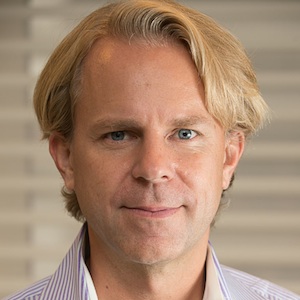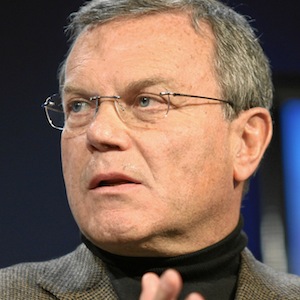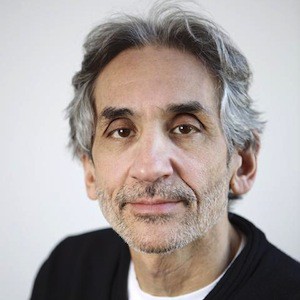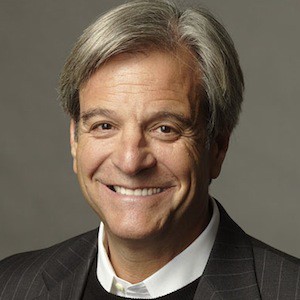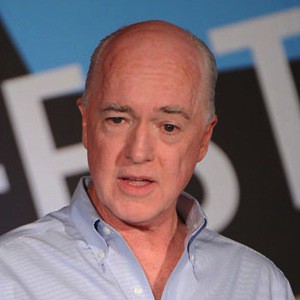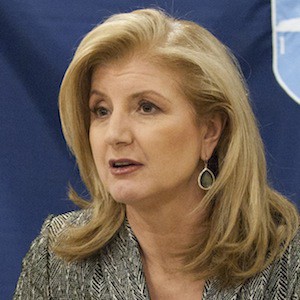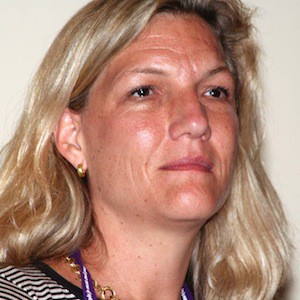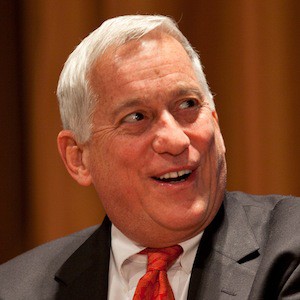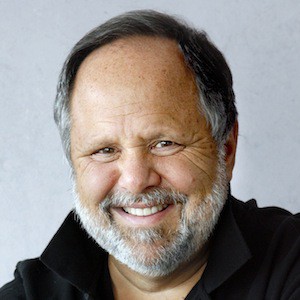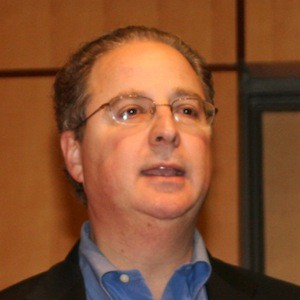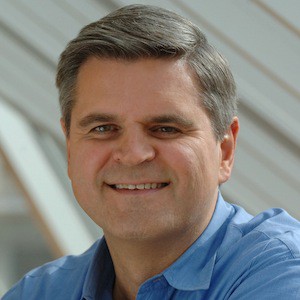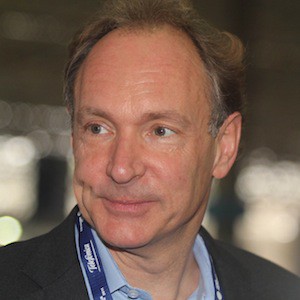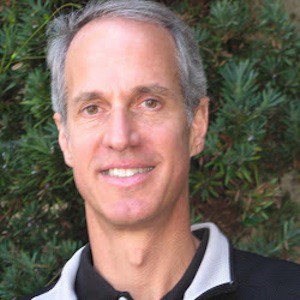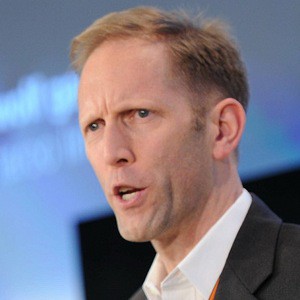John Huey: It is April the 3rd, 2013. We are in the iconic Watergate Tower in Washington DC with David Bradley and Justin Smith of Atlantic Media. David, if you wouldn’t mind kicking this off just by giving us a brief history of how you decided to get into the media business to begin with and when it was, after arriving in the media business, that you realized that digital technology was a profound influence on what you were going to have to do to make this work.
David Bradley: I’m happy to do that. Welcome, both of you. I ended up in this place by failing to get to the place that I intended to get to. I was raised in Washington. I wanted to be, by age 30, the young Republican senator from the state of Maryland. To do that, I decided I should become prosperous before I was powerful. Neither thing happened.
I started a business. It took me a long time to succeed in the business. A long, long time. Decades. 22 years. Finally, I found myself prosperous but no longer in the District of Columbia, no longer Republican, and surely not a U.S. senator.
On my 40th birthday, in that haunting hour where men shouldn’t be allowed to give serious thought, I realized I was never going to become the thing I wanted to be. I came up with the thought that if I can’t be in politics, I can be near politics. If you can’t take the course, you can audit it. Media was as close as I could get to.
I took my earlier companies, Corporate Executive Board and Advisory Board, sold them, and then bought my way into media. I bought the National Journal in the late 1990s. I found it a wonderful product and a really easy business to manage. On the strength of that I thought, “How hard could journalism be, media be?”
So I bought The Atlantic from Mort Zuckerman and got to the full answer, “This is exactly how hard media can be.” Mid 19th century long form fiction and nonfiction journalism was so not even then, late 1990s in fashion. I think it was probably Mr. Zuckerman’s favorite business transaction, selling me The Atlantic.
John: Fast Company was a pretty close second.
David: Yeah, he’d like that one too.
Justin Smith: That was probably his favorite.
John: That was a pretty good one.
Justin: 300 million.
David: The profound problem on the other side of having bought is, I loved it. Terrible business, but I loved it. And I really worked on The Atlantic. trying to turn it around. Mr. Zuckerman had not spent any time at all on the properties. He had subsidized The Atlantic. but he hadn’t been part of managing it. He had a real estate empire to build. I went into the business and met with advertisers, hired editorial staff, oversaw the redesign of the magazine, and bought better quality paper for the magazine 100 levers, and didn’t succeed.
John: It sounds like, in addition to wanting to be close to politics, power and all of that, you also were not interested in the subsidy model. You were trying to make this into a sustainable business.
David: Yes. I’ve seen other wealthy people act the same way. Chris Hughes is talking the same right now as I was talking then. It’s just not satisfying to just subsidize. There is a challenge to creating something that people want to have. The commercial standard forces you to perform to standard.
John: You were an entrepreneur, and you brought your entrepreneurial mindset into this. You found that frustrating.
David: Yes. That’s a very fair characterization.
John: Then what did you do?
David: I did something that I’m good at. What I’m good at, my gift, is seeing gifts in other people and finding extreme talent. I had been tracking Justin Smith, who was at the time with The Week magazine, but had done International Herald Tribune and The Economist and then had gone with a British publisher and created The Week here in the United States. I’d been tracking his incursion into my space, stealing market share from National Journal and from The Atlantic with a publication, The Week, that I had never heard of. I, in an act of self sacrifice, went to the Carlyle Hotel in New York for a three hour dinner at the fireplace and spoke to Justin about coming and leading The Atlantic. Justin was thoughtful about it but had little interest because he had another offer that he was in the final stages of negotiating, so I stayed up late that night and I wrote him a memo.
Martin Nisenholtz: What year was this? I’m sorry. Just so we’re grounded.
Justin: In the summer of 2007. The other offer you can say, because it’s actually relevant to the story, was to be publisher of Business Week, which was one of the great business print brands. But go ahead.
David: I did something that’s thoroughly unkind, especially to do to an ambitious person. I complimented him on how well he had done with his career to that point, but then said, “I don’t understand how your next chapters are worthy of your early chapters. What’s happened to the ambition?” Of course that threw him into days of self doubt, and he ended up joining us.
Justin: Now he finally told me what he did to me. [laughter]
David: Don’t act so naive. You now use the exact same question. It’s such a derailing question.
Justin: Because you’ve taught me so well.
David: He’s a force of nature. The financial turn took place at the Carlyle Hotel beside the fireplace, when an old man, an old world person…
John: A manipulative old man.
David: …manipulated…Yes. That’s exactly right. I’m only going to be with you for a few more minutes and then Justin’s going to take the reins here, so why don’t I answer the other part of the question, which was, when did I discover that the Internet was in a collision course with the properties that I owned?
John: Then there’s a third question we want to ask you before you leave, but go ahead and do that because it comes from that, which is about the future of the industry and where all this is headed.
Martin: I’ll actually have one, too.
John: We’ll move along as quickly as we can.
David: I don’t remember the reason, but I found myself at the USA Today headquarters for a conference that was being sponsored in their legacy funded global tower there, on the Internet and what it could mean for journalism. It was a three yellow pad kind of conference for me. It was 300 ideas and new frames that I had not thought about, almost all of them threatening. They were great if you were on the non legacy side, but if you were sitting there with a 19th century, long form magazine, none of this is comforting. I came back and I was really sobered by it.
I had seen this once before, when an earlier company of mine used to work for hospitals. The Advisory Board Company worked for 2,500 hospitals. Suddenly, managed care and capitation and the Clinton health care plan all arrived. I understood none of it and had to go learn it and remake my business. This felt like an “oh my gosh, you have to remake your business” moment.
This is 2006. There were roughly a dozen, two dozen, entrants into digital media. Some of them legacy enterprises trying to drive over the bridge, and some were just startups.
I decided to go on a Hillary Clinton listening tour. I went to 16 different offices. I went to them and met with editors and publishers for lunch or for dinner and said, “I’m a neophyte. I know nothing about it. Tell me what you know now that you didn’t know before.” I don’t remember all of them, but I was writing down notes before we met just now to give you some of the places.
In the legacy category, I met with the editor of the New York Times website, the USA Today website, Bloomberg, Forbes Inc., Fast Company, Slate, Time, NBC. Went out to dinner with Arianna out in LA. And just took notes, and came back and wrote up the notes. I’ve got them here. I didn’t realize this was a video interview. I don’t whether these will be useful or not, but I’ll give them to you.
John: Oh yeah. We’re posting all manner of memos, memorabilia, speeches. All that sort of thing are attached to this. We’re very grateful for that kind of thing. That will be attached to this. We’re looking for just that sort of resource.
David: This is circa 2006, but what it is is 46 lessons that I heard when I was out on the road. I’ll give them to you. So I don’t take up too much time on the merits here, why don’t I not go through them. There were 8 or 10 that were both significant and turned out to be right. One of the measures I took before I met Justin but just before I began that courtship was to say, “Let’s jumpstart the website with some great talent.”
I had been recruiting Andrew Sullivan from The New Republic ever since I had entered media. Maybe a little bit after I entered media. For six years, I had been writing him every third month and fourth month, just saying, “And now how happy are you?” Once a year, I’d invite him for scones and cream over at my office with a view of the Watergate and the Potomac river and the suggestion that, “Someday all this could be yours.”
He’d regularly turn me down. Finally, I found a moment when he was at Time and he was ready to move. He had something like 500,000 unique visitors at the time. All of Atlantic, everything we had, had in a good month 500,000 unique visitors. He decided to join us. He and I sat in a conference room here, looking at the screen, the Atlantic website, waiting for the moment when Time switched whatever switch Time would know how to flip which would yield the traffic that recircuited from them to us.
John: Which Andrew had cleverly put into his contract, wherever he worked, that he had the URL switch.
David: It switched again when he left us.
John: He figured that out early. He knew that he had a brand. We interviewed him recently in his world headquarters.
David: He’s been talking that way.
John: He speaks well of you guys.
David: I loved him before he switched his traffic to us, and then I’m really grateful since. They flipped the switch, and suddenly our traffic doubled. Overnight, it doubled. It was the first moment I could see that you could win this, not as a legacy competitor but on its own merits, in units of business that we never could have achieved in the legacy era. You can’t grow by 500,000 subscribers [snaps fingers] like that. Right now, the last month, we had 19,900,000 unique visitors. Bitterly, 100,000 short. We should have all sat at our desks the last month, clicking onto our website to get us up to the 20 million.
John: There are people who do that.
David: Really? [laughs] There’s no old world scheme by which a 156 year old legacy property can grow itself in readership about 18 fold in just a handful of years. That’s my set of stories. Do you have another question you wanted to ask me?
Martin: I just have one. I want to go back to this notion of “deeply unsatisfying” in terms of the subsidy model. One of the things that continues to come up over and over again in these interviews is that one of the models going forward is to have wealthy individuals essentially adopt journalistic institutions and finance them in some way or another. There are all different flavors of that model, from the Bloomberg flavor to Russian oligarchs. The notion is I think Michael Kinsley described it again this morning that it’s actually, in the context of Chris Hughes, a pretty satisfying thing to do with your money and your time. But you don’t seem to think it is. Is it personally unsatisfying, or do you just think it’s not a viable way for journalism to move forward in the United States?
John: Another point of view was Eric Schmidt, who said it’s not a viable model because ultimately rich people either die and leave their money to someone who doesn’t share their interests, or they grow bored with that particular cause and move to another.
David: I think you could make an argument that rich people are a real danger to journalism, maybe not in the moment but over the longer term. To answer your question directly, Martin, I meant to say both things. Deeply unsatisfying, to me, to keep putting out something that was failing against any commercial standard. But I also don’t think it’s a healthy thing for the enterprise. You end up with two bad things going on. One bad thing is that it can never grow. No matter how wealthy the fund is or the person is that’s going to subsidize it, there’s going to be a finite amount of money in the trust. It’s going to produce a finite amount of income. You end up creating an enterprise that operates at that level, and then the next year, when things cost more, it will operate at that level but a little more tightly squeezed and the next year a little more tightly squeezed.
We saw that with The Atlantic. with Mr. Zuckerman. He was genuinely generous with the enterprise, but he had a limit of how much he was going to spend on it, which was about $4 million dollars in a bad year. The Christmas party had become a pot luck supper, where everybody brings his own. They had not been able to afford the high end writers. They had lost people like…Nick Lehman had moved on when the contract wasn’t competitive enough. They were increasingly publishing the works of academics who didn’t charge for the pieces or charged at a lower per word rate.
One thing you end up with is a ceiling on the growth and a meaner and meaner culture. “Meaner” in the sense of tighter, financially. The other thing that happens is, they get whimsical and quirky. Since there’s no external standard to which you have to perform, you can publish whatever you want. You can report whatever you want. You can do the indulgences of the aggregate of your talent base.
There’s something really good about The New York Times waking up in the morning, going, “We’re not breaking the news we used to break. We’re being scooped by these people. Furthermore, we’re losing this talent. Everybody meet in the conference room at 8:15 because we have to figure out what we’re going to do.” Those kind of crisis moments which the for profit sector forces on you relentlessly.
John: Well, it’s not capricious.
David: No.
John: Can we segue from that to my final question? One of the reasons we are here to talk to you is…We look over the broad landscape. There are all kinds of definitions of journalism and news. The current dominance of social media, particularly Twitter, in terms of [inaudible 17:47] coverage of campaigns and this sort of thing. We’re covering all that. We’re looking at it. But the biggest question mark hangs over the category of serious journalism reported, deeply analytical, deeply thoughtful, responsible to the masses, some would say boring. Some would say it’s always been that way. It was able to survive because it was part of another package that had a sports section and stock quotes and all those things.
Martin: Classified advertising the most important…
John: Classified advertising, all those things that work in the old, aggregated model. Now it’s all fragmented. Now we find people who are in the serious news business. You’re in it. When you look at it obviously, it matters to you where do you think the future lies for that category? What are the sustainable economic models? How is this going to play out? Will there be many smaller purveyors of this kind of information? Are the mass purveyors doomed? Will they survive? Look in your crystal ball.
David: Abraham Lincoln, before he did the Emancipation Proclamation but after the war had started, was asked, “Are you going to free the slaves?” He said. “I’m not given to know that. I’m like the canoeist who’s on a river who paddles to the next bend in the river.”
I have no view beyond the next bend. I’ll tell you what I see between here and the next bend. Roll it out 10 years, 20 years. I don’t have a theory of that case.
John: Just the next bend.
David: When we invaded Iraq in 2003, we had about 2,000 Western reporters who went in on that embedded with the military. The Atlantic has, if you take our website and our magazine, the ability to… You’ll be able to fact check me on this, Justin. I’d bet we have the ability to publish long form, well reported pieces. I’d bet the economics support us doing somewhere between 50 and 100 of those articles a year. That’s it.
John: That’s a lot, though.
Justin: It is a new model, I would say, a new digital model of the traditional report long form that we could talk about. That’s sort of the two day immersion on a story that’s deeply reported but written in 48 hours. A lot of our journalists, we’re playing around with that model as opposed to that journalist being responsible for four or five posts in one day. They’ll take two days off, three days off, and go deep on something. It’s not the trip to Iraq. It’s not the two month investigation. It’s an attempt to take those values and those ideas and reinvent them in the digital realm.
John: The Economist proved a long time ago that one substitute for deeply reported is deeply educated and highly informed. If something happens, if you’re really smart and you really know what you’re talking about, you can make five phone calls and write a story that comes across as deeply reported because you didn’t have to start from the beginning. You didn’t just graduate from high school and have to learn about the Middle East. You know it. You went to Oxford University. You studied it. You know the 200 year history of it. You know all the treaties. You write a piece and you go. “Oh my god! The Economist does such deeply reported work.” Not really. They hire really educated people who know what they’re talking about. By the way, so do you.
David: My reference to the Iraq War was…That’s never happening again. We’re never sending 2,000 people to effectively write the same story. I would think The Atlantic can chip in its 50 to 100 stories a year, even as small as we are. The New York Times can chip in its 2,000 stories a year, and so forth. I would think we will aggregate our way to enough excellence. What we’re not going to have is a hundredfold the work force that you need doing the same thing. That’s what’s happening to regional papers.
John: As much as we lose something in the translation, would you make the argument that we also gain something? Is there a new focus, a new emphasis on a certain kind of quality?
David: To what you were saying, John. There’s one thing that we find we have to do when we’re not on one of our 50 to 100 stories where we are originating the deeply reported story. That is, we have to find some way to advance it. Either it’s got to be smarter by a moment’s thought, or it’s got to be breaking the second day story 20 minutes earlier than the next person doing it, 1 minute before the next person does it, some kind of value added. What you see in The Atlantic website is 50 people really distraught by, “What can I do to add value to this thing. I can’t just put it up. What’s my contribution?” I think that is relentlessly happening all over the website, where everybody’s trying to improve.
I think what we’re going to see is things move forward faster intellectually and in terms of unfolding narrative than they ever did under the old model. It’s just unfortunate we can’t own it in the same monopoly sense the good old days when Time owned news magazines and The Washington Post owned Washington.
Martin: David just talked about a world where things may get a little bit leaner and a little bit faster. What I want to know from you, Justin, is…That world is also a little bit meaner in the sense that the consumer, while there is some evidence that they’re willing to pay something, is a little bit less certain. The advertising, in particular, has become very problematic over the last couple of years with the advent of programmatic buying. What I’d like to know from you is what is the essential business model that you’re trying to build here as you try and build a more profitable Atlantic?
Justin Smith: [clears throat] Sorry, I’m losing my voice a little bit with a cold. I think the first rule that we subscribe to running this business is not to lock into a permanent view of anything. We don’t have a religion around business model. We don’t have ideology around business model. We obviously have adopted a business model the last couple of years, which I’ll describe, which is working well for us in the moment, but we are very, very, very aware and constantly discussing the highly likely possibility this business model that’s been working for us the last three years may evaporate or may not actually work going forward. In a sense, our business model is to never fall too in love with a business model and to try everything. That’s at the highest level.
I think our business model, as you said at the outset, John, is really around this notion that the web is fragmenting audiences and narrowcasting content to more specific niches. I think you’d think of the Atlantic audience as not a tiny niche, not a small niche, a medium sized niche. Our sense, our strategy is to focus very, very, in a very disciplined way, around that niche audience.
We call them opinion leaders or influentials by producing really high quality journalism that engages them. Producing that journalism in many different forms, different platforms, and, where possible, getting them to pay for it. But where impossible or where we find the consumer payment proposition difficult, we’ve had a lot of success in actually monetizing it through advertising.
We don’t necessarily feel like the industry wide pessimism around the ad model is not felt as strongly, I think, here. Because, I would argue, because of the niche approach of our strategy. What I mean by that is, people talk about CPM depreciation in advertising and how it’s this one way trip down to commodity status and programmatic buying and so on. I think our CPMs digitally have been relatively stable the last…We just did analysis this week and actually they’ve maybe single digit, one, two, three percent declines across three or four years.
Now we’ve had to…That’s off of a very high CPM, relative to what broader publishers get. Because we deliver a niche audience that is very valuable to a very specific type of advertiser, we are able to charge a premium. Because of the services which we package in with the advertising proposition, namely events and other marketing services that are highly customized…
Martin: You’ve shown a willingness to go a few places that some others haven’t been willing to go, in terms of sponsored content, and created a little bit of controversy for yourself.
Justin: Yeah, that was not intentional, the controversy. But the Scientology thing, yes.
Martin: We’ll talk about that, but… [crosstalk]
Justin: We can absolutely talk about that. But just to finish what I was saying, I always say that all inventory is not created equal. That there are B2B sites that deliver some very, very specialist communities that are seeing no CPM depreciation on $80, $90, $100 CPMs, digitally. And they’re largely entirely digital businesses.
Martin: I guess the counter argument to that, just to make it because I’d like to hear your reaction, is that, as the science gets better and better, the traditional intermediary position, the notion of an audience proxy, just dissipates because those business to business sites’ audiences can be identified pretty accurately at about a tenth of the cost by Google or whomever and simply targeted across the web. Unless you think context has such high value, not twice the value but literally 10X the value, and a lot of advertisers just don’t buy that, I’m not sure there isn’t an inexorable improvement in the science.
I’d just love to hear your reaction to that because it’s not a question of value, it’s really a question of how much value?
Justin: My response to that is not to, on a straight banner contextual impression, sure, that’s probably the case and I would concede the argument to you. But when you’re talking about going to an advertiser with an idea that is customized to that advertiser, that comes from an organization that understands its brand and its audience extremely well, that idea is actually expressed across a series of live events, a series of video products, a series of print products…
John: You talked about marketing services. What does that mean?
Justin: That’s the idea. In a sense, that’s the creation of the idea. I think it’s the media company as agency, which is effectively what has happened to us. Atlantic Media is an ideas based marketing agency, digital marketing agency, is another way of describing our company. That multi touch, multi platform, multifaceted, customized bespoke, ideas driven initiative that in the past would have come from Ogilvy or Mather or from an ad agency is, in fact, coming from us directly, cutting out the advertiser, going directly to the client. That’s not replicable by programmatic.
Martin: Cutting out the agency.
Justin: Yeah. But that’s not replicable by programmatic.
Martin: No it’s not.
John: There’s a customer focus that you’re describing. You know your customer. You work with the customer.
Martin: The argument is it’s expensive and not scalable.
John: When you get into this discussion, you have to…
Justin: Yeah, but what is scalable in a niche business? We’re not… We’re looking to grow, certainly. But the scale of a niche business is “niching” the niche. It’s not getting bigger. We’re burrowing deeper into different micro segments of influentials to get more data and more information and more content for them.
Martin: Give them an example, Justin, might be helpful for them…
Justin: A great example that is working really, really well is, we discovered this common ground between this editorial tradition, journalistic heritage we had with The Atlantic about a lot of great journalism around urban matters, urban development, urban design, the future of cities. Going back 100 years, it’s been a thread that, at various points, we’ve had some consequential journalism on that subject. It crossed maybe five years, there was this big boom in advertisers, particularly a lot of our corporate image advertisers that are the central advertising base for an influentials audience. A lot of these are big infrastructure companies, financial services companies, began getting very excited around contextual advertising environments tied to cities and to urbanization, the global trend of urbanization, which is this cross section of politics and economics and money and finance and infrastructure and environmentalism and energy.
We actually created something called the Atlantic Cities, which is not the perfectly named thing given the confusion with the town in New Jersey, but in effect, it’s the first digital media brand dedicated to creating journalism around this megatrend of urbanization globally done on a B2B basis, i.e. information and journalism that will help urban and designers and architects and financiers that understand…
Martin: Do you have conferences about that?
Justin: We do.
Martin: I get that. That’s the niche within the niche.
John: I’ve got to say, just for the benefit of the audience,whoever it may be, I really love that debate. I just want to point out to Justin and the audience that that was not Martin Nisenholtz of The New York Times arguing that side. That was Martin Nisenholtz who started out at Ogilvy and Mather and arguably created the first digital agency, so that was seriously good round.
Martin: It was really Martin Nisenholtz playing devil’s advocate.
John: With some background.
Justin: But no, he’s right. But another way and a flippant and maybe humorous way of looking at it is, we look at programmatic and, just entrepreneurially, we say “What can we do that programmatic can’t do that adds value?” It’s like your back’s against the wall. They’re coming at you and you’re like, “OK, I’ve got to reinvent myself to do something that those machines, those algorithms can’t do that delivers value to the advertiser.”
There’s a lot of things, if you put your thinking cap on, your innovation cap on.
John: Another way of putting it, and I’ve always believed this, that ultimately, the legacy media business, as long as it existed, always depended upon a certain amount of magic. There was also a certain amount of magic with a client, with a brand, for the reader. And ultimately… Now there’s a different kind of magic involved with programmatic and algorithmic.
Justin: Black box magic.
John: That’s a different kind of magic.
Martin: Mel Karmazin famously said, I think, to someone at Google, “You’re fucking with the magic.”
John: Ultimately, I believe that once you get all the magic out of it, then there’s a niche for the magic to come back. Magic will always…People like magic.
Justin: The other way of thinking about it is, how many CMOs are going to say, “OK, great, my whole marketing budget’s just going to go toward this complex algorithm.” I think it’s the argument of media platforms taking over new media platforms and not actually ever taking them over. I think there’s always going to be at some level a portion…The budgets going to get smaller, but you’re seeing the bifurcation of budgets into programmatic, at scale, loads and loads of eyeballs and you’re seeing the other budgets the more bespoke customized market.
Now, it’s hard to get really good numbers on these things. I saw today in Digiday that RTB is only 10 to 12 percent, 10 to 20 percent this year of total display advertising. The growth rate of RTB display advertising is 94 percent in 2013, but it’s projected to drop to 33 percent in 2014. There are issues there, as well.
There’s a lot of unknowns, but we have our back against the wall and we’re creating new ways of creating value, adding value.
Martin: Can I ask you a journalism question?
Justin: Sure.
Martin: From the point of view of the person who runs the business and clearly has a sharp bead on what you think your current strategy is and, as you said, aren’t wed to any particularly future strategy, whatever works, describe the place of the journalism in your current business model? You’ve got a magazine. You’ve got a website that is somewhat different from others in the space and has done pretty well. Explain how you view all that, and also where you think it’s going?
Justin: I would say that the way we view it is, because we are a media company that’s targeting this niche customer that’s the most educated, the most discerning, the most skeptical, the core of everything we do is the quality of the journalism that actually can get this target audience to pay attention and to engage. It really is the life blood of everything we do. It starts with… It has to be if you’re going to set out to try to engage this type of consumer.
I think what we pride ourselves on a little bit is that the journalism five years ago used to be really kind of a single mode, in a sense. It was the magazine monthly, The Atlantic Monthly magazine. Arguably, that journalistic model had not changed or evolved that much in the previous maybe 50 maybe 100 years.
There was the front of the book and the well and the back of the book and different sections and so on. Certainly there some mini innovations on the edges, but it was largely about, really, largely about the well, the deeply reported, long from kind of journalism that The Atlantic is very famous for.
I think what’s exciting is the challenge we put to ourselves, which is how do you take the values of that journalism, how do you take core mission that has existed for a long period of time and then reinvent it for all these other platforms and all these new environments.
You have a person like…Jim Fallow’s a great example who came out of that tradition of The Atlantic. He’s been here for 30, 40 years. Jim started blogging. Jim started doing web video for us. Jim started developing…
And this is what a lot of…It’s not unique to The Atlantic. Started doing a lot of shorter form stuff as part of his reporting for longer form things and began this relationship with the long form and the short form, the digital and the print. It was this new creation.
Then you saw the journalism actually becoming dynamic between the individual voices online of the actual…
One of the great initial paths that we took…
[bell]
Yeah?
Martin: Be careful. It was shaking.
Justin: One of the great initial paths we took was this “Voices” paths anchored by Andrew Sullivan and Ross Douthat and Ta-Nehisi Coates and so on, where we were literally dynamically creating this debate among these different journalists and different voices. The model where they’re working online for us now, it’s very similar in a way to what Andrew does. It’s the journalist/DJ/curator who’s doing a number of different things. He’s doing the deeply reported piece, taking two or three days at doing the quick aggregation piece, doing an analysis piece and kind of mixing it up back and forth. But then also writing for the magazine.
I think it’s the versatility… It’s transporting those values and those quality standards to all these different models.
Martin: Can you talk about where your traffic comes from? What percentage now comes from social media versus search versus direct, and what’s the implications of that are over time? In other words, what’s growing fast and what’s shrinking?
Justin: Can I give you directional numbers because I don’t have them off the top of my head. I think the big headline for us, obviously, is we have a pretty solid direct number maybe in the high 30s, low 40s. Even larger than that, I think, is the social number. There’s the “pure social” and then, I don’t know if you use this term, “dark social,” which is the sending content via email or text or other forms. If you add that in with the traditional social, just the social networks, becomes the overwhelmingly largest segment of our traffic. I think the big story here is the story we’ve seen everywhere, which is social pole vaulting search very aggressively over the last 18 months, 24 months. We’ve never been very strong at search. It’s always hovered between maybe 10, 15, 18 percent, but social obviously went from 0 to, without dark social, probably somewhere in the 30, 40, 50 percent, and with dark social maybe up to 60, 70, or something.
Martin: Do you design for that? In other words, talk about the tactics around that and how it touches the journalism.
Justin: David comes from a research background so one of the things he did, we assigned one of these PhD researchers from his past to literally document and analyze the best practices of our best social journalists. We have this deck. We probably don’t want to share it publicly but we have this deck of best practices on how to create social journalism.
John: They’re sources of best practice?
Justin: Similar idea. What’s funny is we have this expression where your best journalistic decision is made when you made the job offer because in the web environment we’re not able, at the speed that things are moving, to actually review someone’s work as closely, to review the headline, to review the subject matter, to edit it. In a sense, the strategy of the Atlantic.com these last couple of years, first we had the voices, the bloggers, led by Andrew. The second strategy was actually to have these individual journalists who manage sections of the site who themselves are what we call native digital journalists who have such intuitive sense of the web and of how to create sharable content. They have the metabolism. They have the social network themselves which they’re constantly seeding and a part of on Twitter and so on.
Martin: Have you learned anything from Buzzfeed from Jonah Peretti’s work? What have you taken from that?
Justin: I think, for us, we’ve been more interested in the business learnings of Jonah Piretti’s stuff than the editorial.
Martin: You mean the advertising side?
Justin: Yeah. How they’re creating sponsored content. I think they’re doing some really novel, different things. I think we are obviously looking at them, as well. One of the best practices, I think there’s 30 or 40 of the high/low, the ways of treating low brow content with a high treatment and a high brow content with a low treatment is something we’ve perfected because it fits The Atlantic brand quite well. One of the most popular pieces on the site recently was this incredibly high brow cultural analysis of “Gangnam Style” that was all about what this actually meant, what the Korean language words meant and what the neighborhood it came from and the socioeconomics of that community. That was a classic example of us looking at a quasi low brow subject and applying an Atlantic lens to it.
Photographs. Huge lessons and learnings about visual storytelling. We’ve got this blog called In Focus which is just so powerful and a huge driver of social traffic, which is a big, big, big, big part of our growth story the last couple of years. Alan Taylor, again, is an engineer. Not a journalist by training, an engineer that lives in Boston and, again, very much in that DJ mode.
John: Wasn’t there an Alan Taylor involved with Fast Company?
Justin: That’s a different one.
Martin: What have you learned from Quartz?
Justin: From Quartz?
Martin: Talk a little bit about what it is and why you started it and how it’s going and what you’ve learned from it.
Justin: You want me to tell you about Quartz?
Martin: Yeah.
Justin: Quartz is our newest brand. The broader thought, strategically, is that we’d been very successful at transforming our traditional brands into digital brands and so the second phase of our strategy was to create pure digital brands that didn’t have any traditional components and attack different traditional markets. We’re very, very interested in the global business and financial market, occupied now really by the FT and The Economist. We see that as another little micro market. We don’t put the FT and The Economist marketplace in the broader business marketplace. We don’t put it with Forbes and Business Week. We don’t even put it with Wall Street Journal and Bloomberg.
It’s this global English language influential niche community, again, that are spread around the world. These brands are explaining the global economy and how to navigate the global economy to this tribe of niche, high level players.
The FT and The Economist are both very defensive vis a vis the web, big paywall strategies and so on. As this community traveling the world is extremely mobile and extremely digital, we saw a great opportunity to build a mobile brand around really, really high quality, free but sharable journalism, utility journalism, for this community.
The novelty, of course, for us is it’s the first brand we really built with a mobile first mindset. If you see the experience, we don’t really have a home page because it was really designed much more like a news feed or like a Twitter feed on the smartphone. That’s obviously not to this notion that people are predominantly reading units of content that are being spread independent of one another. It’s the unbundled approach.
Our bet is that The Economist is still saying, “Every Friday and Saturday read the bundle of content, either in print or read the bundle on the iPad,” and we’re saying, “Let’s just blow up that bundle and put out 40 to 50 Economist quality global deciphering stories a day, 24 hours a day.”
By the time Friday comes around, most of that stuff in the Friday bundle that The Economist is holding onto so preciously, a lot of it will have been consumed in the grazing and the multitasking consumption and night and morning consumption that happens all week long in the unbundled Quartz version of it.
John: Is this a significant investment for you?
Justin: Yeah. It’s our biggest new venture. We have about 20 to 25 journalists. We hired the editor of the wallstreetjournal.com, Kevin Delaney, who’s a real innovator. It’s ad supported but, again, because it’s a very niche audience we’re able to charge really, really high CPMs for it and we’ve also created, obviously, completely non standard ad units. No banners, no buttons. It’s all large, beautiful ads that are integrated into the content flow. We have a sponsored content module which is different and new. Again, the one thing I didn’t mention in all of this is the key to ad models, other than, of course, the fear of programmatic, is ad models work when cost structures are transformed. I try to think, I wrack my brain about how many new startups are launching with paywalls. It’s very, very few. Then I don’t wrack my brain when I think of the dozens and dozens of profitable businesses with ad models.
I own a company called Breaking Media which I started on the side which publishes abovethelaw.com and fashionista.com. Above The Law is the largest site for lawyers in America. It’s got two or three journalists. It’s got a million or 1.2 million lawyers glued to it every day, all the top firms in America. In fact, when I go to a cocktail party and meet a partner at a law firm, if I say, “I’m founder of Above the Law,” they’re much more impressed than I’m president of The Atlantic.
It’s got 40, 45 percent margins because it’s created content at a much, much lower cost.
Martin: This is very important. This comes up over and over again in the context of legacy media, this notion that you’ve got a legacy brand here, but you’re trying to transform a cost structure.
Justin: You can’t have a successful ad model on an old media cost structure. That’s right. I quip. It’s just a quip. The only people you really hear talking about paywalls are people with legacy cost structures.
Martin: I was going to ask you about what lesson you brought here from the week and I was suspecting that the answer would have to do with the cost model.
Justin: You’re actually right. Felix Dennis has this great story. I don’t know if you know Felix. He’s a wonderful publisher. One of his stories, he was smoking a pack of cigarettes, he pulled me aside and he said, “Justin, one of the truths about publishing, this is an unchanging, untransformable truth. It takes five Americans for every English person to make a magazine.” He pulled the British weekly celebrity magazine out at the time, this is 2004, whatever it was, Hello in England. He took the masthead. He put it next to People, he put it next to whatever the new ones that were started, I can’t even remember the names.
Martin: Us magazine.
Justin: Us magazine and the German one. Literally, you could just go down to each department, times five, times five, times five, times five.
John: We had a British subsidiary that had three magazines on the same floor. IPC.
Justin: IPC, of course.
John: On the other hand, in defense of legacy media I’ll say People magazine earns more than five times as much as of all of IPC.
Martin: Anyway, back to…
Justin: You’re right. That was a huge lesson from Felix was that there’s just a different way of doing it and it’s what entrepreneurs do.
Martin: If I could, just for a moment, I’d love to hear your perspective on this. I know it was probably a mistake, but I think there was a recent controversy around a person who blogged you were trying to get them to write for nothing. Cost structures are fine but zero payment is simply not sustainable. Maybe it is. Why bias the answer. Maybe it is. Is your model to get people to write for free? Is that really the…?
Justin: No, I mean absolutely not. I think that was a really frustrating experience for us. I think now that we’ve talked about our success so much we’re getting a little bit more of the target of the media writers and so on are looking for us to misstep a bit. But in that instance, actually, we were looking to excerpt, I think, a couple of hundred words of a much, much longer piece, which we actually, in theory, based on fair use, digital aggregation standards, probably didn’t even have to ask him to do it.
John: The HuffPo might have just…
Justin: We could have just put it on there…
John: There you go.
Justin: The truth is is that, and it was, the writer posted this email exchange with a young junior editor who had actually just started at our company. I think it was her third day or something. The truth is, yeah, we have tons of different models for paying for content. We have our own journalists, and by the way, the Atlantic has twice as many journalists today, paid journalists, full time, as they did five years ago. Twice as many. It’s something like 35 to 70 journalists. Are a lot of those journalists younger and more digital? Of course, but that’s our story, when most of the industry is going the other way. But that doesn’t mean we have to be ashamed of the fact that we have paid journalists that are on staff; that we have journalists that we hire on a freelance basis, that we pay for, pay by the word or pay by the piece; and that we also have free contributors. I think it would be insane for any publisher not to experiment with free content, free contributor content.
That would just be shooting yourself in the foot. There are tons of people who are great writers, who are citizen journalists, who love The Atlantic brand, who want the platform, want to get their ideas out there. We think it’s a great…
[crosstalk]
John: I live in a fairly small town. Someone recently scored a big piece on Atlantic.com. I’m relatively certain you didn’t pay her for it. It was a huge event in the city. There were parties around her being published in The Atlantic.
Justin: To the critics who say, “God, The Atlantic is ruining journalism by not paying.” It’s really the inverse. I think we we’re trying to save journalism here by experimenting with lots of different models. Trying like hell to throw as much spaghetti against the wall to figure out what sticks and what works. It’s working for us. We’re hiring more journalists in the process and producing more journalism than we ever had in our 155 year old history.
David likes to say if Emerson and Wendell Holmes were sitting around the table, they’d be pretty happy about what’s going on here these days. They’d say, “Damn, God, we’re producing 175 stories a day.”
The quality is in a certain very high bandwidth. It’s experimental. I think they’d be proud.
